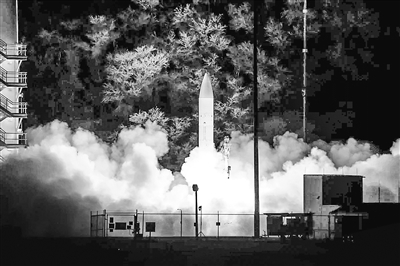
By Luo Xi
As the international strategic landscape is being shaken up, traditional nuclear powers, such as the US and Russia, have shown changes in their perception and judgment of the deterrent effect of nuclear weapons in recent years. As a result, strategic offensive and defensive weapon systems represented by nuclear weapons become an important instrument in the toolbox of major-country strategic competition.
Risks of an arms race in strategic offensive and defensive weapons are mounting.
At present, traditional nuclear states like the US, Russia, Britain and France are taking faster steps to upgrade their nuclear arsenal, regarding nuclear weapons as an important means to maintaining their advantages, raising their position and winning the competition. After multiple rounds of nuclear disarmament, Washington and Moscow still own about 4,000 in-service nuclear warheads each, accounting for about 91% of the global nuclear forces. By May 2021, more than 2,000 nuclear warheads in the world are in a state of “high vigilance”.
After Biden took office, he didn’t honor his political commitment to mitigating the nuclear arms race but carried on the Trump administration’s plan to spend about USD 1.2 trillion over the next 30 years on modernizing the nuclear arsenal. Russia, on the other hand, always views nuclear weapons as a way of raising its major-country position and competing with the US. Therefore, it is accelerating the modernization of its “sea, air and land-based” nuclear system, aiming to raise the modernization rate to 88.3% by the end of 2021. Britain, which originally followed the principle of “minimal nuclear deterrence”, also announced recently to lift the upper limit of its nuclear warheads to 260, while France plans to invest EUR 25 billion in the next four years to upgrade its nuclear arsenal too.
In strategic defense, the US spent USD 15.3 billion in the fiscal year of 2021 on anti-missile defense, which will be further raised to USD 20.4 billion the FY2022, while the US military is determined to establish a “multi-layered, integrated” global strategic defense system. Russia, to strike a strategic balance with the US, is speeding up the integration of its anti-missile air defense system and the R&D and commissioning of new types of anti-missile weapons.
Washington and Moscow are also competing fiercely in hypersonic-speed offensive and defensive technology. The global strategic power balance and status of strategic stability are getting more complicated.
Major countries become more practical in arms control negotiations.
As the US and Russia are having less strategic mutual trust in each other, pragmatism is driving them to seek a “more liberal, proactive and flexible” mode of nuclear disarmament, which has two features compared with the traditional mode. For one thing, political commitment or diplomatic initiative proposed by the head of state is replacing traditional arms control treaties such as protocols or technical appendices as they are easier to reach and operate.
For the other, routine notification is replacing the vigorous “intrusive” check. The traditional check, which is basically conducted on site, is prone to the leak or theft of secrets, a problem that doesn’t exist in data notification or information sharing,but the new mode is less binding and harder to execute. This will exert new and complex impacts on the international process and the major-country game of nuclear arms control.
Regional nuclear non-proliferation led by major countries remains tortuous.
Due to major-country competition, the nuclear status in certain regions remains fraught with twists and turns.
The Biden administration has recently completed the assessment and adjustment of its DPRK policy, reaffirming the strategic goal of realizing “complete, verifiable, irreversible denuclearization” on the Korean Peninsula. So far, its diplomatic approach remains dominant in America’s DPRK policy while pressuring plays second fiddle.
On the Iranian nuclear issue, the contracting parties to the Iranian nuclear deal held a meeting in Vienna on April 6 this year to discuss America and Iran’s resumption of fulfilling the deal. Yet six rounds of discussions have been held and serious divergences remain between the two countries.
In 2018, the US unilaterally backed out of the Iranian Nuclear Deal in defiance of the international community’s objection and has kept imposing maximal pressure on Iran ever since, which is the root cause for the current dilemma of the Iranian nuclear issue. As the initiator of all this mess, the US is obligated to return to the deal unconditionally. However, although it claimed to do so, Washington refused to lift its unilateral sanctions on Iran and has even set preconditions for resuming the deal. This means that the White House has not changed its non-proliferation policy that essentially means forceful pressuring, and that implies numerous difficulties in resuming dialogue between the US and Iran. Now that EbrahimRaisi, known for his hawkish stance toward the US, is elected Iran’s new president, Washington is also facing many uncertainties on its way back to the deal.
(The author is from the War Research Institute of the PLA Academy of Military Science)













